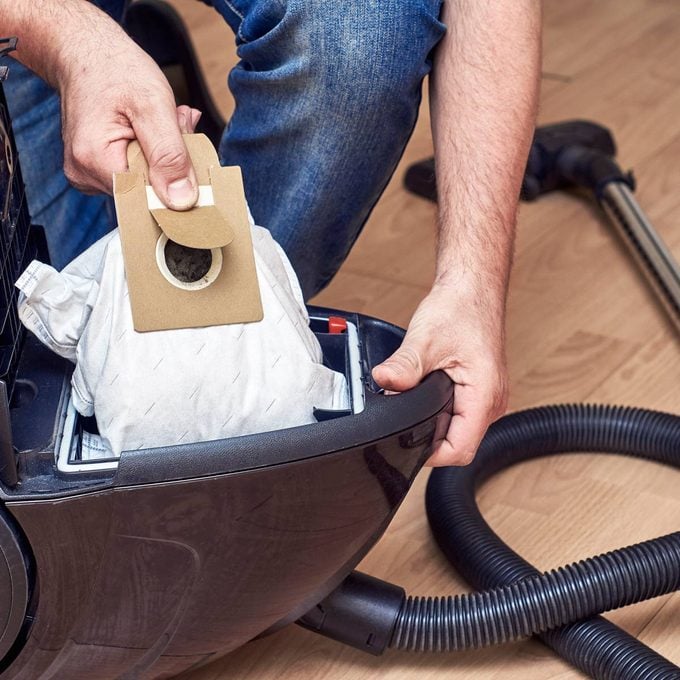This Is How Often You Should Be Replacing These 7 Filters at Home
Updated: Apr. 10, 2024
In the same way you test smoke alarms each year for safety, remember to check filters on everything from your water supply to your vacuum cleaner as part of seasonal maintenance.

In the same way you test smoke alarms each year for safety, remember to check filters on everything from your water supply to your vacuum cleaner as part of seasonal maintenance.
“In order to extend a product’s life and performance, it’s really important to keep them clean and check on replacement parts,” said Jill Notini of the Association of Home Appliance Manufacturers.
Here’s a look at when to change your home’s filters—including some you might miss—to help them run as safely and efficiently as possible to keep dirt, dust, mold and pollutants from the air and water that come into your home.
Furnace or HVAC Unit
The best-known filters are usually the panels that slide into a gas-fired furnace or central heating, ventilation and air-conditioning (HVAC) unit. The Environmental Protection Agency (EPA) suggests using a filter with a Minimum Efficiency Reporting Value (MERV) of 13 or higher. Choose the highest rating your system can accommodate and follow the manufacturer’s suggestion for when to change filters. The EPA suggests replacing them every two to three months. Here are 12 HVAC troubleshooting tips to consider before you call an HVAC tech.
Portable Air Cleaner
The EPA says studies show portable air cleaners (or air purifiers or sanitizers) can make small improvements in cardiovascular and respiratory health by reducing indoor pollutants. Some models tell you when it’s time to wash, vacuum or replace filters. In general, a HEPA filter should be changed every year, pre-filters last 30 days and carbon filters can last three to six months. Clean permanent filters every three months and replace when damaged. Our guide will save you hours of online research looking for the best air purifier for your room.
Refrigerator Filter
If you have a water filter in your refrigerator for ice makers or water dispensers, change them every six months or as recommended by the manufacturer to remove contaminants such as lead, trace pharmaceuticals and microbial cysts. Most are good for 400 gallons of water. Be wary: There are plenty of look-alike counterfeit water filters that don’t meet safety standards on the market. Here’s how to spot them.
Dryer Filter
Most modern dryers are good about reminding users to clean the lint trap with each use, but it’s good to also give it an inspection to make sure there are no holes, requiring a replacement. Also scrub them with soap and water every six months to a year, to remove any build-up of residue (such as build-up from dryer sheets) that can block air flow. Give the ventilation hose an inspection, too, to make sure lint has not gotten loose and caused a potential fire hazard in your duct work.
Humidifier Filter
Disposable humidifier filters or pads help absorb mineral deposits and impurities from water and particles and bacteria from air.
Portable humidifier filters should be changed every three months at least—more often if you use it daily and/or have hard water.
For built-in whole-house humidifiers: Change once or twice a year, as you do your home maintenance rounds. This is how to choose the best humidifier for your space.
Vacuum Cleaner Filter
Vacuum cleaners suck up and trap allergens, hair, dirt and more from flooring and upholstery with built-in bags or filters helping to contain the fine particles—especially with HEPA models. Don’t let bags get more than three-quarters full, and change filters on bagless vacuums every three months. Once or twice a year, it’s also wise to clean out the canister, check the belt for cracking and make sure the hose isn’t clogged.
Well Water Filter
Anyone with well water may have a whole-house filter that needs changing every 30 to 90 days to keep pollutants and unwanted chemicals from getting into the house. These filters can also be used for some city water systems. Here’s how to install one.
